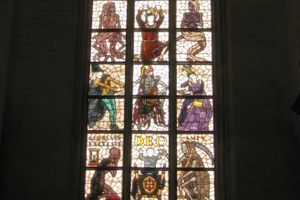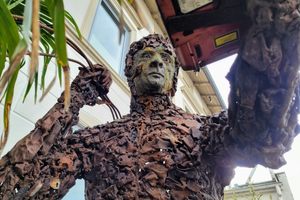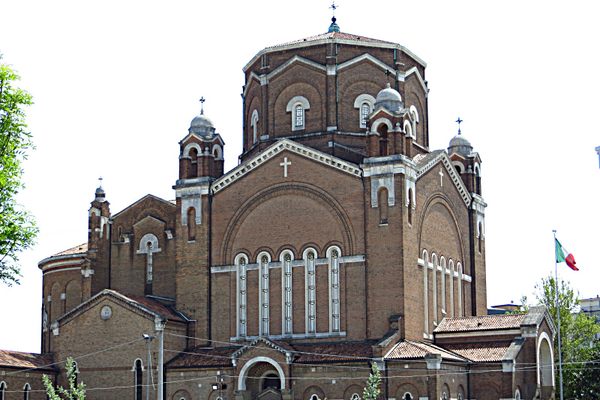About
St. Mary’s stands tallest amongst the seven churches in Lübeck. The French Gothic style church has two towers that reach over 400 feet and the tallest vaulted brick ceiling in the world. Your eyes are drawn upward to the soaring ceiling, artwork, and windows. But if you keep your eyes down, you’ll find a stark reminder of Lübeck's role during World War II.
On Palm Sunday, March 29, 1942, Allied forces bombed the city of Lübeck in the German state of Schleswig-Holstein. Lübeck was the first German city to be attacked by a massive Royal Air Force air raid. By the time the bombing raids were done, the RAF had dropped 400 tons of bombs and destroyed or damaged more than half the buildings in Lübeck. One structure that sustained extreme damage was St. Mary’s church.
The church has been magnificently restored, as has the entire city, which now boasts its status as a UNESCO World Heritage Site. But one feature of the church was never repaired: the bells.
During the bombing, the church bells fell from nearly 400 feet and crashed into the floor. Today they remain exactly as they fell. The bells are in a shattered heap, partially melted into the ground beneath the vault, providing a stark contrast to the polish and grandeur of the rest of the church. The damaged sight serves as a peace memorial and is visible behind an iron gate.
Related Tags
Know Before You Go
St Mary’s is an operating church that holds services and concerts regularly. The church is open to the public starting at 10 a.m. and closes between 4-6 p.m. depending on the time of year. There is a 2 Euro admission but free if you are attending mass or going to pray. Guided tours are available and they have brochures in German and English if you prefer a self-guided tour.
Published
May 12, 2017

























